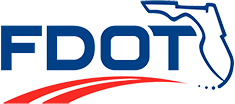455299-1 Florida Heartland Regional Trail - Polk County
Website for Entire Project: https://floridaheartlandregionaltrail.com/
Project Details
| Work Type: | Feasibility Study |
|---|---|
| Phase: | Planning |
| Limits: | From the Hardee County Line to the Teco Auburndale Trail |
| Length: | 63 miles |
| City: | |
| County: | |
| Road: | |
| Start of Current Phase: | Mid 2025 |
| Est. Completion of Current Phase: | Mid 2028 |
About
The Feasibility Study for the Polk County segment of the Florida Heartland Regional Trail will evaluate the feasibility of constructing an approximately 63-mile-long, 12-foot-wide paved multi-use trail extending from the Hardee–Polk County Line near Bowling Green north to the Auburndale TECO Trail south of Interstate 4 (I-4) in Auburndale. The project builds on the 2024 Collier-to-Polk Trail Master Plan, which identified this corridor as a regionally significant connection within the Florida Shared-Use Nonmotorized (SUN) Trail Network.
The study area is divided into two segments:
• Segment 1: Hardee–Polk County Line to south of State Road (SR) 60 at the Fort Fraser Trail
• Segment 2: SR 60 to the Auburndale TECO Trail
Multiple trail alignments will be explored within Segment 1. Segment 2 follows a Defined Planning Corridor that incorporates existing and planned facilities such as the Fort Fraser Trail, Lake Hollingsworth Trail, Lake Parker Trail, and University Boulevard Trail.
As part of the Feasibility Study, the potential trail alignments will be evaluated to identify social, cultural, natural, and physical environmental considerations, along with engineering constraints and opportunities for safety and mobility enhancements.
Public Involvement
Public involvement is an integral part of the Feasibility Study process. FDOT will engage interested parties in the study process and there will be opportunities for public comment, including a public information meeting. You may also submit comments or questions about this project at any time during the study, by using the "Send a comment" button to the right.
If you are interested in being added to the mailing list to receive study information, please use the "Send a comment button" to provide your information to the project team.
FAQs
What is a regionally significant trail?
The Florida Heartland Regional Trail has been identified and prioritized as a regionally significant trail by the Florida Greenways and Trails Council [Section 260.0142(4)(c), FS]. That means it is recognized for its potential to:
- Cross multiple counties
- Attract national and international visitors
- Provide opportunities for economic and ecotourism development
- Showcase the value of wildlife areas, ecology, and natural resources
- Serve as a main corridor for critical links and trail connectedness
Why are multiple feasibility studies being conducted?
Because of the project’s extensive length, feasibility studies are being conducted for each county that is part of the Florida Heartland Regional Trail planning area: Collier, Hendry, Glades, Highlands, Hardee, and Polk (see map). Each study will follow its own schedule to evaluate the Master Plan’s preliminary alternatives, assess environmental impacts, and solicit public input. A “no-build” alternative will also be considered which assumes that the trail will not be developed. For general information, visit the project website at FloridaHeartlandRegionalTrail.com.
What is a Feasibility Study?
A Feasibility Study considers potential social, economic, and environmental effects, as well as constructability and costs, to determine project viability. The study helps FDOT determine how the project will move forward to future phases. The starting point for the Florida Heartland Regional Trail’s feasibility studies will be the Collier to Polk Trail Master Plan’s preliminary routing alternatives. The basic activities of the Feasibility Study include:
Data Collection
The first major work effort is the collection of all available data pertaining to the study corridor including existing and planned infrastructure, existing and future land uses, drainage patterns, and environmental resources.
Alignment Development and Analysis
Once data collection is completed, various alignments are developed that meet the purpose and need of the project. These alignments are evaluated to identify potential impacts, or constraints on the social, economic, natural, physical, and cultural environments. The evaluation also includes the development of preliminary cost estimates and determination of the need for additional right-of-way for improvements, if applicable and public outreach will also be completed.
Feasibility Report
The Feasibility Study report will document results of public outreach efforts; development and evaluation of alignments; and the feasible Recommended Alignments that can proceed to the next phase for in depth analysis.
Contact Information
| PD&E Project Manager |
|---|
|
Alejandro Mendez, PE
813-563-9446
alejandro.mendez@dot.state.fl.us
|
| For Media Inquiries Only |
|
fdot-d1comm@dot.state.fl.us
|
